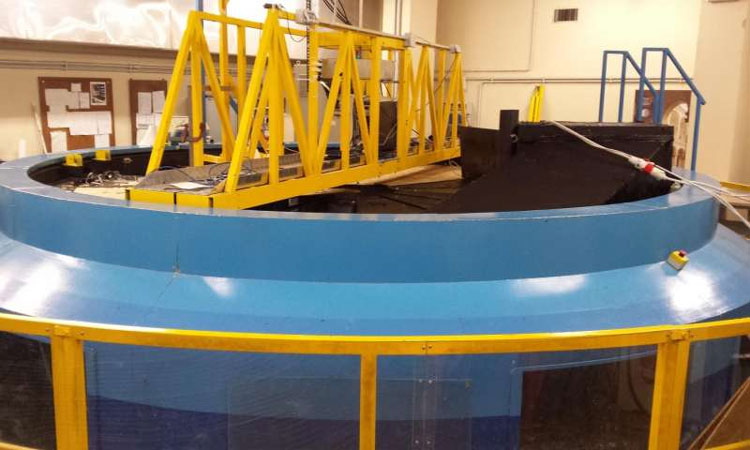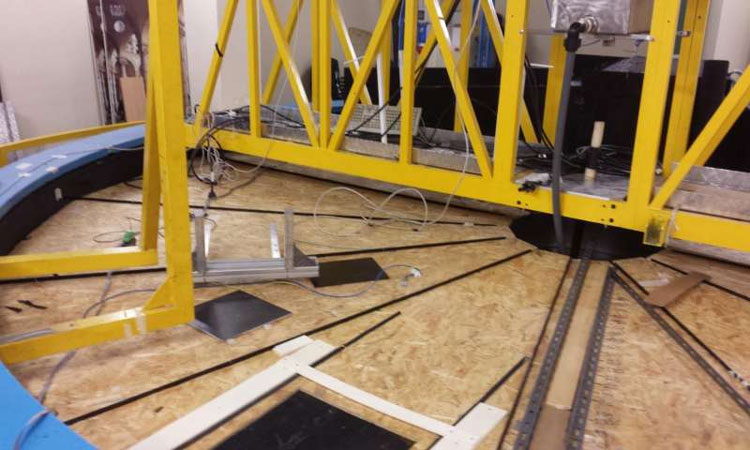In the first step to predicting the potentially dangerous phenomena of freak waves, a team of scientists from Australia, Belgium, Italy and the UK have demonstrated how ocean winds can generate spontaneous rogue waves using a wave tank.
Rogue or freak waves are extremely high, steep waves appearing in deep ocean, surging without warning and seemingly at random.
These events might cause severe damage to ships and structures like oil or gas platforms. The ability to forecast them would be hugely beneficial, but little is currently understood about what generates them.
Researchers from The University of Melbourne (Australia), The Swinburne University of Technology (Australia), The University of Leuven (Belgium) and The University of East Anglia (UK) used a special circular wave tank at The University of Turin (Italy) to study the statistical properties of wind-generated waves, and therefore the likelihood of rogue wave development.
Unlike previous experiments on rogue waves generated in conventional longitudinal tanks, the wave field they created by blowing wind in the annular wave flume can be thought of as infinitely long. Researchers started with still water in the tank, before turning on fans which replicated a steady wind, similar to conditions which might be seen on the ocean.
Wind was blown over the surface for two hours, and the surface elevation of the water measured throughout.
As wind starts blowing, an erratic wave field is generated. Rogue waves appear to develop naturally during the growth of the waves, and were detected just before the wave height reaches a stationary condition. The measurements let the research team estimate the probability of finding high steep waves, showing that this is higher than expected, thus providing crucial information about the mathematical likelihood of these waves occurring.
Dr Davide Proment from UEA’s School of Mathematics, said: “Despite a great effort made in recent decades the complete understanding of the formation of these extreme events remains elusive from the mathematical and physical point of view.
“The particular geometry of the flume allowed us for the first time to create waves propagating circularly and continually – an ‘unlimited-fetch’ condition. Similar physical conditions actually appear in reality around the Antarctic continent where strong winds blow and seas states are notoriously extreme.”
The experiment took place at the TurLab facility of the Physics Department of the University of Turin (Italy). The experimental campaign was supported by the European Union through the European High Performance Infrastructures in Turbulence (EuHIT) consortium.



Comments are closed, but trackbacks and pingbacks are open.